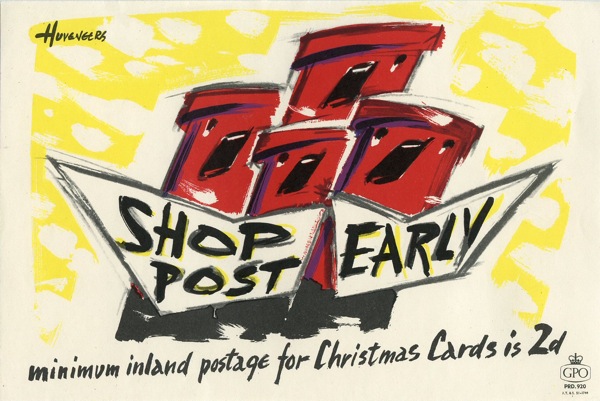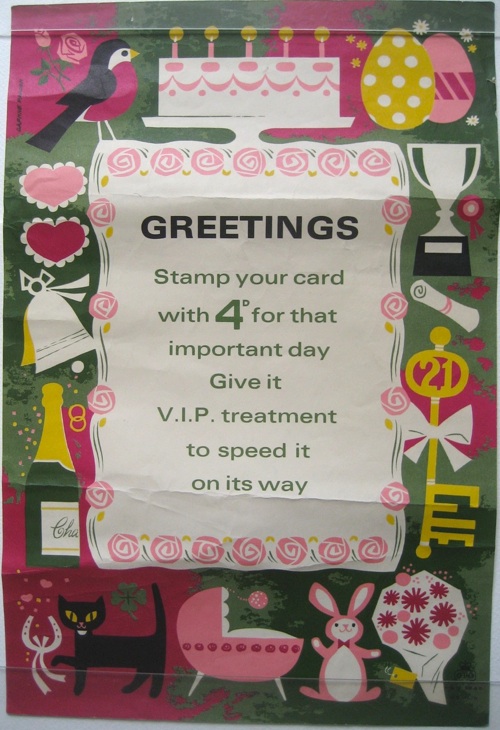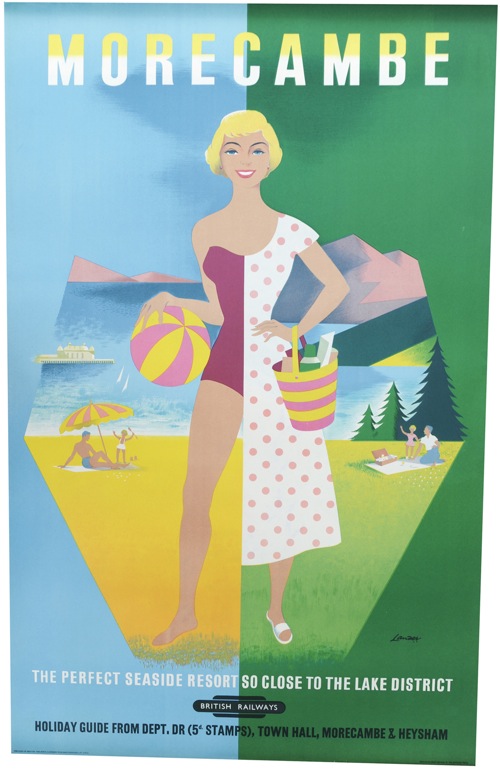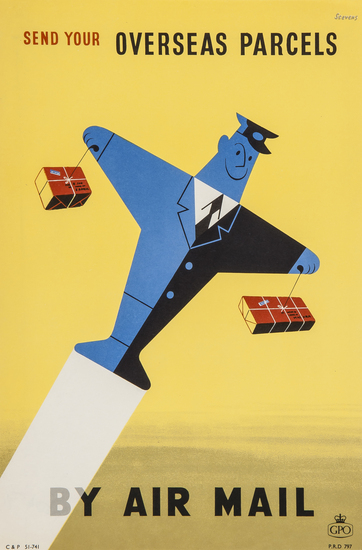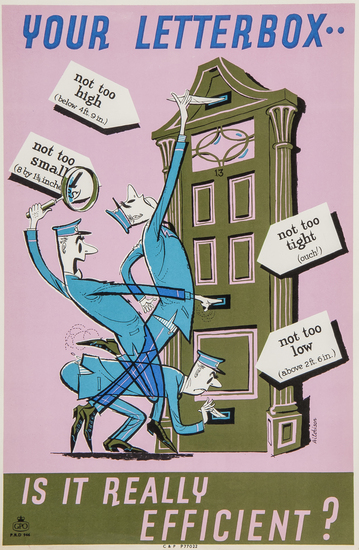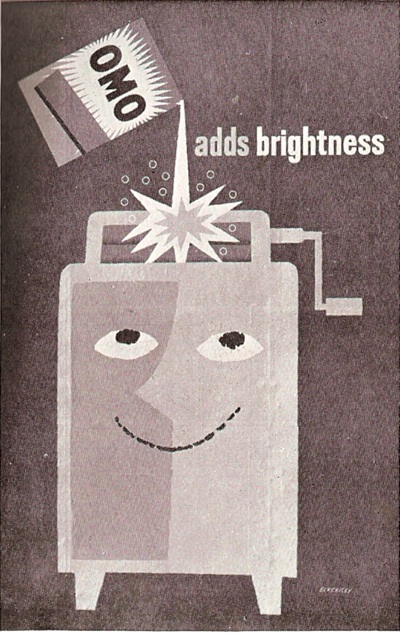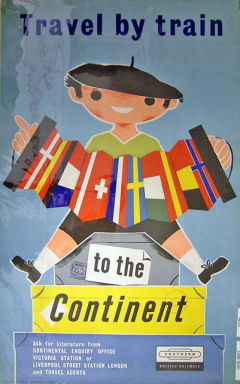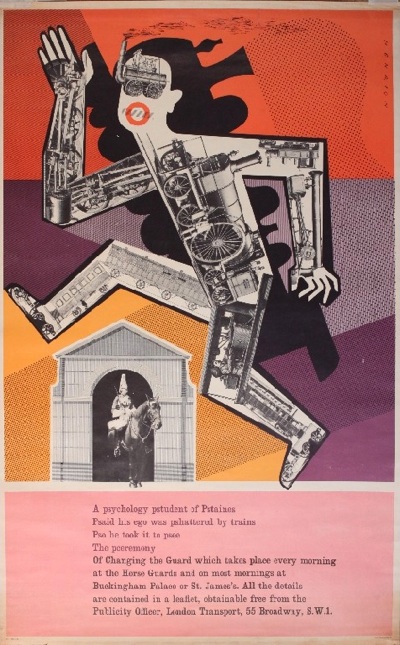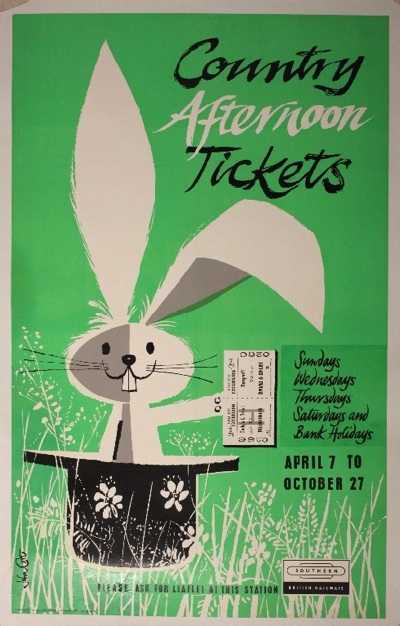Correct Selling
couple of years ago now, I wrote a long piece on here about why some kinds of poster seem to survive in greater quantities than others. In short, the argument was that where posters do survive in large numbers, this tends to be because the institutions concerned – London Transport, the railway companies and Shell – had a system for selling them to the public.
But I said at the time, that post was very much a work in progress. Now things have moved on a bit, because Rik Shepherd has been in contact through both comments and email with some additional information about how GPO posters were also sold. And very interesting it is too.
The reason for this is that Mr Shepherd senior, his father, was, in the best possible way, a bit of a chancer, something probably best explained by his son.
Dad did have a habit of writing to organisations on the offchance that they wanted to give/sell him something – the request for part of London Road station when it was turning into Piccadilly failed, the request for tickets from the closing Mumbles railway yielded a destination blind from one of their trams, and we’ve got a stack of timetables and promo brochures from oodles of US railroad companies.
One of the organisations that he regularly bothered was the GPO, as Rik explained when he commented on the original blog post.
If I’d known there was interest in cut-down & framed posters in-situ, I’d have taken pictures of my parents bedroom before we started clearing the house.
They had trimmed and framed copies of the GPO “Use Your Correct Address” posters of Eilean Donan (John Minton) and Brookland (David Knight) on the wall for at least the last decade. We’ve also found a trimmed copy of Minton’s Iwerne Abbey, a trimmed and framed Minton Greenwich which I vaguely remember being on the walls in the 60s & 70s, and what we think is a trimmed David Knight Polruan.
Dad seems to have got the Minton posters in April 1957 by writing to the Mount Pleasant offices. The three cost 3s 0d in total (1/6d for Iwerne, 1s for Greenwich and 6d for Eilean Donan) and were sent out with a note from a Mr R. Weeber giving the prices and the rather polite request “Perhaps you will kindly forward a remittance for 3s.0d. in due course.”
What’s even better is that Mr Shepherd Sr also kept the correspondence.
(I’ve put these images in quite big, so just click on them if you want to read the text properly)
I love the fact that they’re only asking for payment after the posters have been sent out. Those were the days.
Mr Shepherd senior didn’t give up at with that, though. Go forward ten years, and he is once more trying to order some posters from the GPO.
But as you can see, times have changed, and the GPO now have an order form available – and what’s more, here it is.
I would like to order all of those please, with a particular emphasis on the last one which is new to me and splendidly moody.
And I used to live there too.
Now all of this would be fascinating enough on its own. But what makes all of this even more important is that there doesn’t seem to have been many records of this kept elsewhere (a fact that possibly we could have guessed from the slightly ad-hoc nature of that order form).
I asked Anna Flood, archivist at the British Postal Museum and Archive, what they knew about the poster selling, and she couldn’t find anything about this in the books or in their records. Which is rather exciting really, as it means that Quad Royal has – thanks to Rik Shepherd – managed to uncover a brand new historical fact here. I’m quite chuffed.
The only reference Anna could find in their archives is one which doesn’t shed any light on Mr Shepherd’s poster buying, but does stretch the timescale back quite a bit, in fact to this series of posters.
POST 33/4722 – Publicity: supply to school, posters, leaflets, first issue – 1934
Re the H.S. Williamson series of posters:
– PRD 88 – Relays carrying the King’s messages, 1482
– PRD 89 – Mails for the Packets arriving at Falmouth, 1833
– PRD 90 – Loading mails at the docks in London, 1934
– PRD 91 – Loading air mails for the Empire, Croydon 1934
‘It is likely that the issue of these posters [to schools] will give rise to further demands for them….c) from private individuals, who want one or more of the posters for nursery or other house decoration’………’As regards c), posters will be sold, so far as stocks permit, at the following prices, to include packing and postage:- Single posters 1s each. Set of four posters 3s.’…..’Persons desiring to buy posters should be advised to write to the Controller, Post Office Stores Department, Mount Pleasant Depot, EC1, [Public Relations Department, GPO, London, EC1 – crossed out] specifying the title of the poster or posters they desire to buy and enclosing a postal order for the necessary amount.’ 13th November, 1934, Public Relations Department.
A later memo states ‘ copies may be obtained on personal application to the Public Relations Department, Armour House, 40 St Martins-le-Grand, London, EC1’. Dated 28/11/34.
And she comments,
So indeed, as early as 1934 the Post Office PRD was allowing members of the public to purchase GPO posters (maybe because of the costs involved in producing runs of posters, hence they didn’t want the expenditure to go to waste, and maybe also because the PO was intent in raising its public profile at the time, hence the ‘schools’ campaign). However, it may have taken a while for the process to become formalised, with the issue of ‘for sale’ lists and order forms, such as those Rik Shepherd has.
I don’t think we’re in a position to write an entire thesis on GPO poster survival from these small scraps of information. But what this does show is that, although they may not have advertised the fact, the GPO did sell posters to private individuals and this is most likely the way that GPO posters, in their smaller numbers survive today.
It’s also interesting to note that the posters that the GPO thought that people were interested in buying in 1967 (as shown on the order form) and indeed the posters that Mr Shepherd was actually interested in buying in 1957, were the ‘artistic’ ones, i.e. the ones in which a fine artist had been commissioned to create a painting which was then turned into a poster. Because in 1957, the GPO was also producing posters like these:
Admittedly they weren’t quite scaling the same graphic heights in 1967, but there was still Daphne Padden and Kenneth Bromfield on show in your local post office.
But these weren’t the posters that people were meant to buy or wanted to buy. So fewer of these survive than of the ‘artistic’ ones. A quick trawl through Onslows’ archives does seem to support this theory, as many more of the painterly posters seem to come up for auction than the more graphic ones. Which is of course a great shame, as it’s the graphic design that I at least would rather be buying nowadays. But I can’t really blame the public for buying what they liked at the time. At least I don’t think I can.
That’s not the important point though, I’m still very happy that we’ve managed to find another small piece of the jigsaw and discover how a few more posters survived. So if anyone else out there has something that they think might be interesting, please do get in touch. You never know, it might be a piece of information that no one has known until now.
Oh, and GPO correspondence wasn’t all that Mr Shepherd kept – more on his archive next week.










